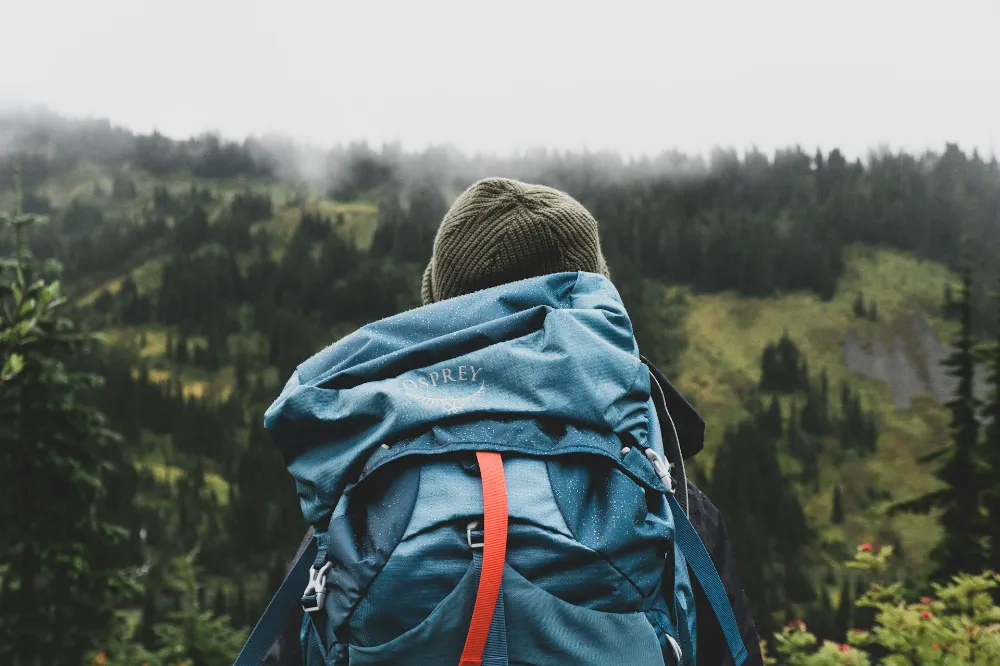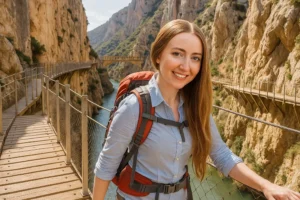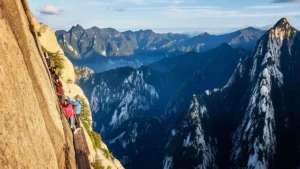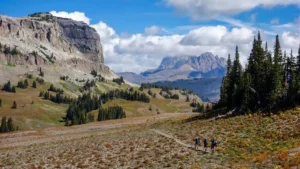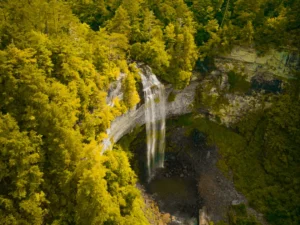Backpacking isn’t just about strapping a bag on your back and heading into the woods. It’s a skill. A mindset. A doorway into a world where every footstep takes you deeper into both nature and yourself. But for beginners, it can feel overwhelming—gear lists, routes, food planning, weight limits…where do you even start?
Right here.
Whether you’re chasing alpine sunrises or escaping the grind of city life, this is built to get you started the right way. With the right backpacking tips, beginners can avoid rookie mistakes, stay safe, and fall in love with the trail.
Let’s break it down.
Pick the Right Backpack (Yes, It Matters More Than You Think)
Think of your backpack as your mobile home. If it’s uncomfortable, poorly fitted, or overstuffed, your trip will feel like punishment instead of adventure.
What to look for:
- Capacity: For 1–3 night trips, go with a 40–60L pack. Anything more is overkill for a beginner.
- Fit: Head to an outdoor store and get fitted properly. Your torso length—not your height—matters most.
- Support: Look for a padded hip belt and adjustable shoulder straps. Your hips should carry most of the weight, not your shoulders.
Pro tip? Pack it and wear it around the house or on a day hike before committing to a multi-day trek.
Don’t Overpack—Pack Smart
Beginner mistake #1: bringing everything just in case.
You don’t need five shirts. You won’t need two pairs of jeans. And trust me, leave the cast iron skillet at home.
Here’s the golden rule: Pack what you need, not what you want.
Start with the “Big Three”:
- Backpack – Already covered.
- Sleep System – Tent, sleeping bag, and sleeping pad.
- Cooking System – Stove, fuel, pot, and utensil.
Once those are set, add:
- One change of clothes
- Rain gear
- First aid kit
- Headlamp
- Water filter or purifier
- Food (we’ll talk more about that in a bit)
Everything else? Think twice before you toss it in.
Master the Art of Meal Planning
Forget soggy sandwiches or boring granola bars.
Backpacking food is fuel, and when done right, it’s delicious and energy-packed.
Keep it simple and light.
- Breakfast: Instant oatmeal, dehydrated eggs, or granola with powdered milk.
- Lunch: Tortillas with nut butter, jerky, trail mix, or tuna packets.
- Dinner: Dehydrated meals (yes, they’ve come a long way), ramen with extras, couscous, or instant rice with freeze-dried veggies.
Don’t forget snacks. Your energy levels will crash without them. Think nuts, energy bars, dried fruit, or dark chocolate.
And yes, bring a small treat. That bite of peanut butter cup at 9,000 feet? Priceless.
Learn How to Layer (and Love It)
Backpacking weather changes fast. Sun, rain, wind, and cold—sometimes all in one afternoon.
The key is layering. And no, we’re not talking fashion here.
The basic system:
- Base layer: Moisture-wicking shirt (avoid cotton).
- Insulating layer: Fleece or puffy jacket.
- Outer layer: Waterproof jacket.
Add a beanie and gloves, even in summer. Nights get chilly. Being cold and wet is miserable—and dangerous.
Know Where You’re Going (And Tell Someone)
This isn’t a walk in the park. Backpacking involves planning.
Before you leave:
- Choose a beginner-friendly trail (look for loops or out-and-back routes under 10 miles per day).
- Download or print maps.
- Learn how to read a topographic map and use a compass—even if you’re using GPS.
- Check trail conditions, weather, and any permits required.
And most importantly? Tell someone your plan. Where you’re going, when you’re coming back, and when to worry.
Safety first. Always.
Water: The One Thing You Can’t Skip
You can go days without food. But without water? You’re toast.
Figure out your water sources before you hike. Carry a filter, purifier, or both. Don’t trust any stream, no matter how clear it looks.
Good beginner options:
- Sawyer Squeeze filter
- Katadyn BeFree
- LifeStraw (great for emergencies, less ideal for long trips)
Pro move? Carry electrolyte tablets or powders. They help with hydration and make boring water more drinkable.
Learn the Basics of Trail Hygiene
Let’s get real for a second. You’re going to be sweaty. Maybe dirty. Possibly smelly.
But hygiene still matters.
- Bathroom: Dig a cathole 6–8 inches deep, 200 feet from water sources. Pack out used toilet paper or use natural alternatives (smooth stones, leaves).
- Cleaning up: Use a small quick-dry towel and biodegradable soap—away from streams. Wet wipes work too.
- Menstruation: Use a menstrual cup or pack out all used products in a sealed bag.
Oh, and hand sanitizer? That’s your best friend.
Respect Nature: Leave No Trace
Backpacking isn’t just about taking from nature. It’s about protecting it.
Follow the 7 Leave No Trace Principles:
- Plan ahead and prepare
- Travel and camp on durable surfaces
- Dispose of waste properly
- Leave what you find
- Minimize campfire impact
- Respect wildlife
- Be considerate of other visitors
That means no loud music, no feeding animals, and definitely no carving your name into a tree.
Expect the Unexpected
Blisters. Rainstorms. Detours. That mystery noise outside your tent.
Backpacking is unpredictable—and that’s part of the fun.
But it pays to be prepared:
- Carry a basic first aid kit
- Bring a multi-tool or knife
- Pack an emergency blanket
- Know the signs of dehydration, hypothermia, and altitude sickness
Most of all? Stay calm. Problems on the trail are usually solvable if you stay level-headed and resourceful.
Choose the Right Shoes—and Break Them In
Blisters are the enemy of happiness.
Hiking boots or trail runners? That’s personal preference. What matters most is that they fit well and are broken in before your trip.
Look for:
- Solid ankle support
- Water resistance (or quick drying, depending on the terrain)
- Roomy toe box
And don’t skimp on socks. Merino wool is gold.
Practice Before You Go Big
You wouldn’t run a marathon without training, right?
Start with overnight trips. Sleep in your tent in your backyard. Test your stove. Try packing and unpacking in the dark. Hike with a full pack.
The more you practice, the less you’ll panic when things go sideways.
Confidence on the trail doesn’t come from luck—it comes from preparation.
Bonus Tips from the Trail
Here’s what seasoned backpackers wish they knew when they started:
- Keep your gear organized with packing cubes or stuff sacks.
- Start early. Mornings are cooler, quieter, and give you more wiggle room for surprises.
- Stretch. Your body will thank you the next morning.
- Keep essentials handy. Snacks, map, water, and rain gear should be accessible without digging through your entire pack.
- Smile at everyone you pass. Backpackers are some of the kindest people out there.
Final Thoughts: Embrace the Suck (Sometimes)
Here’s the truth.
There will be hard moments. Your legs will ache. Your gear might get wet. You’ll question your sanity at least once.
But then—there’s the sunrise from your tent. The silence of untouched wilderness. The thrill of cooking your own food under the stars. The pride of carrying everything you need on your back.
That’s the heart of backpacking.
It’s not just a hobby. It’s a journey. A way to disconnect, challenge yourself, and remember what really matters.
So go ahead. Lace up. Step out. And begin.
The trail is waiting.
Common Questions
For a 1–3 night trip, a 40–60 liter backpack is ideal. It provides enough space for essentials without being overwhelming for new hikers.
A good rule of thumb is to keep your pack under 20% of your body weight. Focus on lightweight gear and prioritize only what’s necessary.
Choose lightweight, high-calorie, easy-to-prepare meals like dehydrated foods, instant oats, tortillas, and trail mix. Don’t forget snacks and something for a treat!
Use a water filter, purifier, or purification tablets at any natural source like streams or lakes. Never drink untreated water, no matter how clean it looks.
Wear moisture-wicking layers and avoid cotton. Always carry rain gear, an insulating jacket, and extras like gloves and a beanie—even in warmer seasons.
Some trails and parks require permits, especially for overnight stays. Always check local regulations and secure permits ahead of time if needed.
Dig a cathole 6–8 inches deep and 200 feet from water sources, trails, and campsites. Pack out toilet paper in a sealed bag or use natural alternatives.

